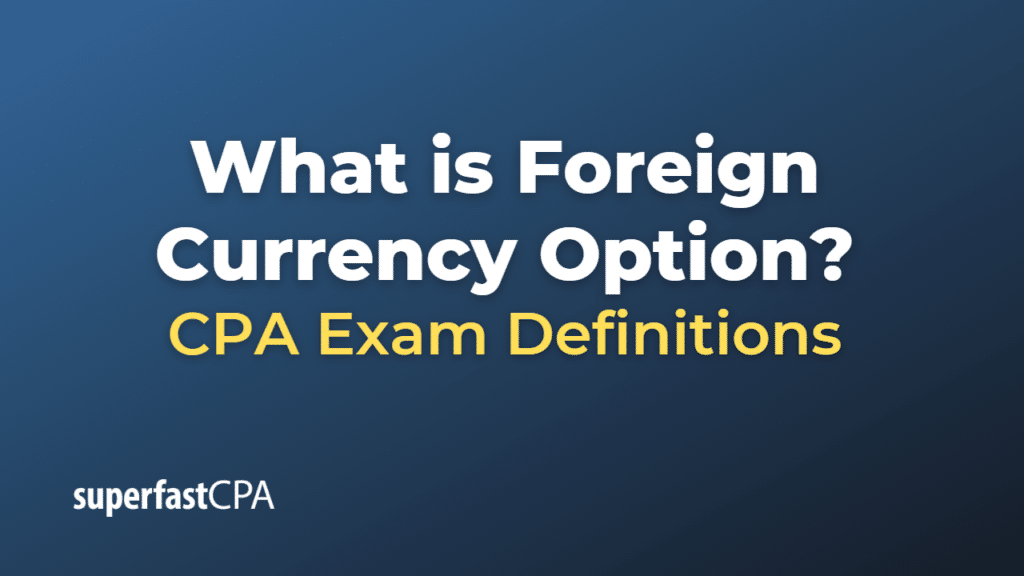Foreign Currency Option
A foreign currency option, or simply a currency option, is a financial derivative contract that gives the buyer the right, but not the obligation, to buy or sell a certain amount of foreign currency at a pre-set exchange rate, known as the strike price, on or before a specified date in the future.
There are two types of currency options:
- Call Option: Gives the holder (buyer) the right to buy a currency at a specified exchange rate during a specified period. This is typically bought if the holder believes that the value of that currency will increase in the future.
- Put Option: Gives the holder (buyer) the right to sell a currency at a specified exchange rate during a specified period. This is typically bought if the holder believes that the value of that currency will decrease in the future.
For acquiring these rights, the buyer pays a cost called a “premium” to the seller. If, at the expiration date, the prevailing market exchange rate is more favourable than the contract’s strike price, the buyer can exercise the option. If it’s not favourable, the buyer can let the option expire worthless, with the loss being limited to the premium paid.
Currency options are used for hedging against fluctuations in exchange rates, speculating on potential currency movements, and in certain structured financial products. They are traded both on exchanges and over the counter.
Example of Foreign Currency Option
Suppose that an American company, called “US Tech Inc.”, expects to receive €1 million in payment for a large export order to a customer in Europe three months from now. However, US Tech Inc. is worried about the foreign exchange risk; it’s concerned that the euro may weaken against the dollar in that period, which could mean less dollar revenue when the euros are converted.
To manage this risk, US Tech Inc. decides to buy a foreign currency call option. The call option gives it the right, but not the obligation, to buy euros at a pre-determined exchange rate (the strike price). Let’s say the current exchange rate is $1.10/€1, and the company buys a call option with a strike price of $1.10/€1, paying a premium of $20,000 for this right.
Now, two scenarios can happen:
- The euro weakens: Let’s assume that in three months, the euro falls in value and the exchange rate is now $1.00/€1. The euros from the payment now convert to only $1 million. However, US Tech Inc. can exercise its call option to buy euros at the previously agreed rate of $1.10/€1. So, it still gets $1.1 million, minus the premium it paid for the option ($20,000). Thus, the net income is $1.08 million instead of $1 million.
- The euro strengthens or remains unchanged: If the euro’s value increases or stays the same, and the exchange rate is above or equal to $1.10/€1, the company wouldn’t exercise the option. The option expires worthless, and the company’s loss is limited to the premium it paid for the option ($20,000). The euros from the payment are directly converted at the prevailing higher exchange rate.
So, by buying the call option, US Tech Inc. was able to protect itself against the risk of the euro falling against the dollar, while still being able to benefit if the euro remained the same or strengthened.













